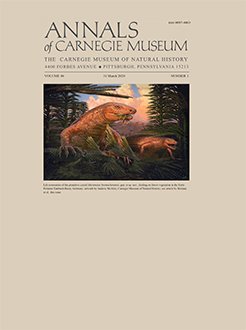A new genus and species of a basal synapsid Caseidae, Martensius bromackerensis, is described based on four partial to nearly complete mostly articulated skeletons that provide a comprehensive knowledge of the skeletal morphology. All four specimens were collected from a single site, the Bromacker quarry, in the Lower Permian Artinskian Tambach Formation, Germany. The Bromacker caseid is the first to be reported from Germany and can be easily distinguished from all other caseids based on substantial lists of autapomorphic and plesiomorphic characters. Of the four caseid specimens only the smallest, a juvenile, and the largest, an adult designated as the holotype, are nearly complete, articulated, and possess skull material: in the juvenile a small partially articulated portion of the skull, and in the adult a nearly complete but dorsoventrally crushed skull. The two specimens are distinguished from one another by features attributed to different ontogenetic stages of development, which include skeletal ossification, proportional dimensions of elements, and most interestingly marginal dentitions. The last category includes a feature unique among caseids of an ontogenetic change in the dentition from insectivorous in the juvenile specimen to what is believed to be an omnivorous dentition in the adult.
A phylogenetic analysis posits the Late Pennsylvanian Eocasea martiniReisz and Fröbisch, 2014, as the basalmost member of the monophyletic Caseidae and the later occurring middle Early Permian Bromacker caseid as the sister taxon of the remaining late Early and Middle Permian members of the clade. This series of relationships parallels a proposed chronology of evolutionary changes in the dentitions and associated diets of caseids.





